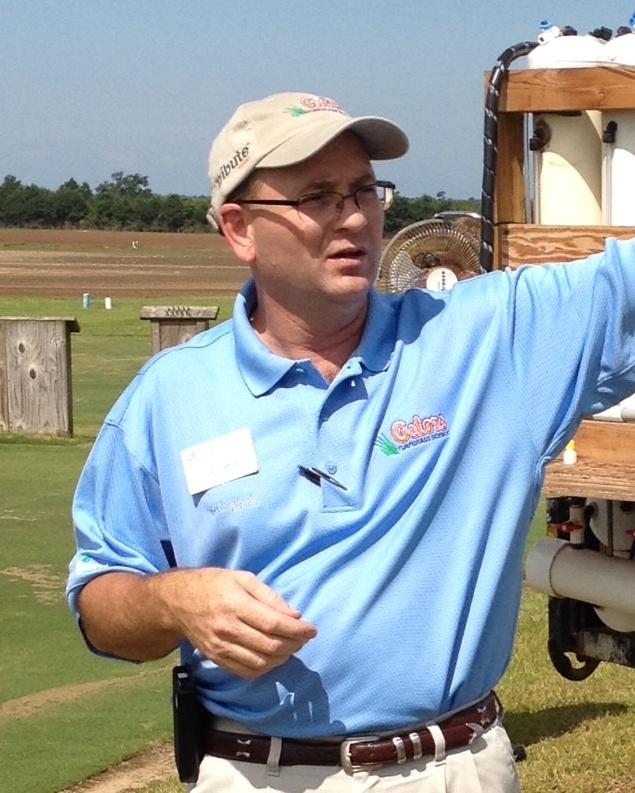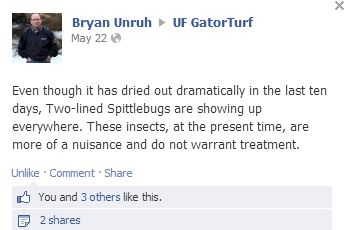In recent weeks Spittlebugs have been found everywhere in the western parts of the panhandle. Spittlebugs are the little black and orange insects you find everywhere in early June. The adult spittlebug is about 1/4 inch long and has two orange lines across its back. You may notice them flying on you while you mow the lawn.
The immature spittlebugs called nymphs, are usually found in a foamy white mass that characterizes the name of the insect. The spittle mass is for protection of the nymphs from predators and desiccation.
The spittlebug can cause injury to ornamental turfs and other ornamental plants. The adults feed on turf, centipede is the turf of choice. When feeding, the insect injects a toxin into the leaf blade with its piercing/sucking mouthparts. The pierced leaf blade will take on purple, white, or yellow stripes along the turfgrass blade vertically. Heavy infestations are best identified by a combinations of finding the injury, spittle masses, and large numbers of adults present.
Recently spittlebugs have been spotted across many counties in the panhandle. Many have brought them to the extension offices for identification and treatment recommendations. Identification is the correct first step when having an IPM or Integrated Pest Management approach to insect control.
Bryan Unruh Ph.D is the UF/IFAS turf specialist stationed in Jay at the West Florida Research and Education Center. Dr. Unruh posted on Facebook about Spittlebugs and the post read:

Sticking to an IPM plan, at this current date spittlebug damage has not met the aesthetic threshold to put a control plan in place. Once the threshold has been met then cultural, mechanical, an chemical techniques need to be discussed to best take care of the issue. Since Dr. Unruh commented on spittlebugs there has been a dramatic increase in rainfall, so we can expect for the spittlebugs, to stay around a while longer. If you think you have an infestation that warrants treatment, call your local extension agent for treatment options.
 0
0

